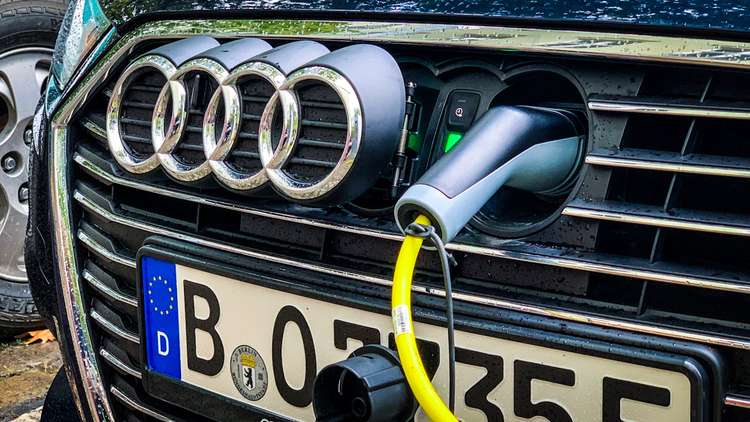Life with a plug-in hybrid in Berlin

When we got my family’s current car, I really wanted a full electric vehicle. We live in an apartment in the center of Berlin without a garage, however, which means we park on the street. A full EV would make us totally dependent on the network of public curbside charge points. More and more charge points are being built every month, but we weren’t yet comfortable relying on them all of the time.
So, we hedged and got a used plug-in hybrid Audi A3 e-tron. A starter EV, if you will. One that we can drive on electricity around town for most of our needs, but which always has petrol in the tank so that we’re never stranded because we couldn’t find a charge point to use the night before.
For me, driving the A3 e-tron underlines its nature as a transitional car. On the one hand, it’s lovely as an electric vehicle in town and as a gas-powered vehicle on the highway. It’s zippy off the line, handles well and, since it’s an Audi, it has great fit and finish along with lots of creature comforts.
On the other hand, it leaves me wishing it were a full EV every time I drive it.
On a full charge, the car claims that it can go a bit over 40km on its 8kWh battery. Our normal trips around our part of town have a lot of stop-and-go traffic, however, so I usually need to find a charge point several times a week to keep the gasoline motor quiet. Every time I plug it in, I think about the irony of how I’m doing this at least 5 times more often than I would in a full EV with a reasonably sized 50kWh battery. And how each charge takes almost 3 times as long since the A3 e-tron can only ingest 3kWh instead of the full 11kWh that the power point can deliver.
Furthermore, since the nearest public charge spot that we can use right now is 500m away, dropping off and picking up the car each time involves a little bit of a walk. Usually, it’s not a big deal at all — in fact it’s good for me — but it is something that you think twice about when it’s cold or inclement outside. If it’s too cold, of course, I can always choose to be lazy, let the car emit CO2, and get almost 500km of range on a tank of gasoline. I try not to make that choice.
The upside of having a small battery is that the cost of each charge is small. Charging up from empty costs all of €2.70, even paying the full public charge point rate of €0.40/kWh. It’s not nearly as good a deal as charging up at home if you can, but it still works out to being somewhat cheaper than using gasoline here in Germany. Given the environmental benefits, I’m not complaining.
And, it’s not like I’m stuck only being able to charge up near home. There are public charge points with included 4 hour parking in a lot of places near where we need to drive, including right next to the café next to my son’s kita. Drop off the kiddo, get a coffee, do a bit of email, and let the car get topped off. Easy.
All in all, having a plug-in hybrid has worked out extremely well for us. We make at least 90% our local trips on electric power only. And, we’ve had the security of not having to depend entirely on the electric charging infrastructure yet as it gets built out here. But things are moving quickly. Certainly, by the time our lease is up on our current car, it’ll make sense for us to get a full EV for the next one, even as a garage-less urban apartment dwelling family.
Postscript: There’s a new public charging point right that’s been installed across the street from our apartment that should be available to us soon. That’ll make charging up easier than ever and remove the 1km round trip walk excuse on cold winter days.
